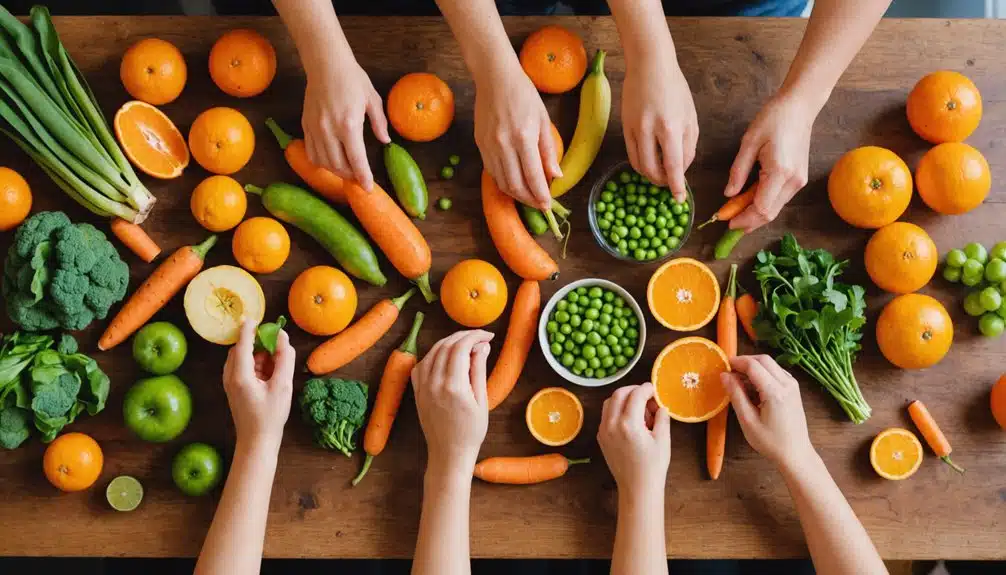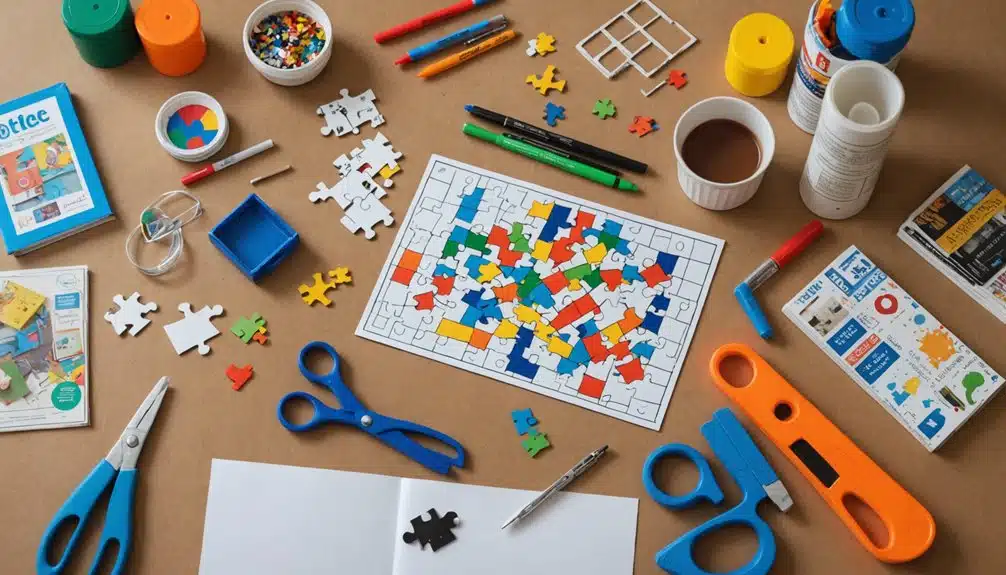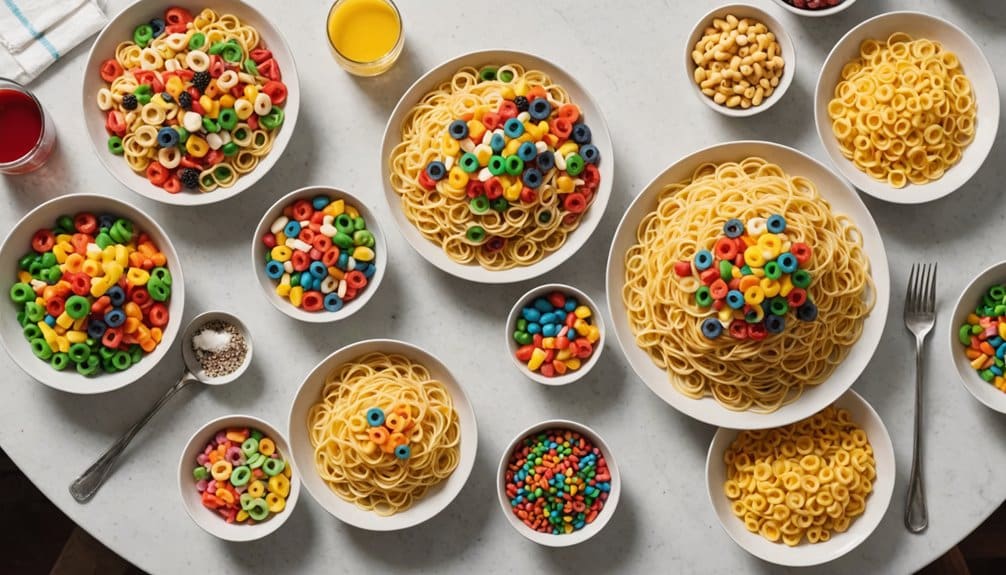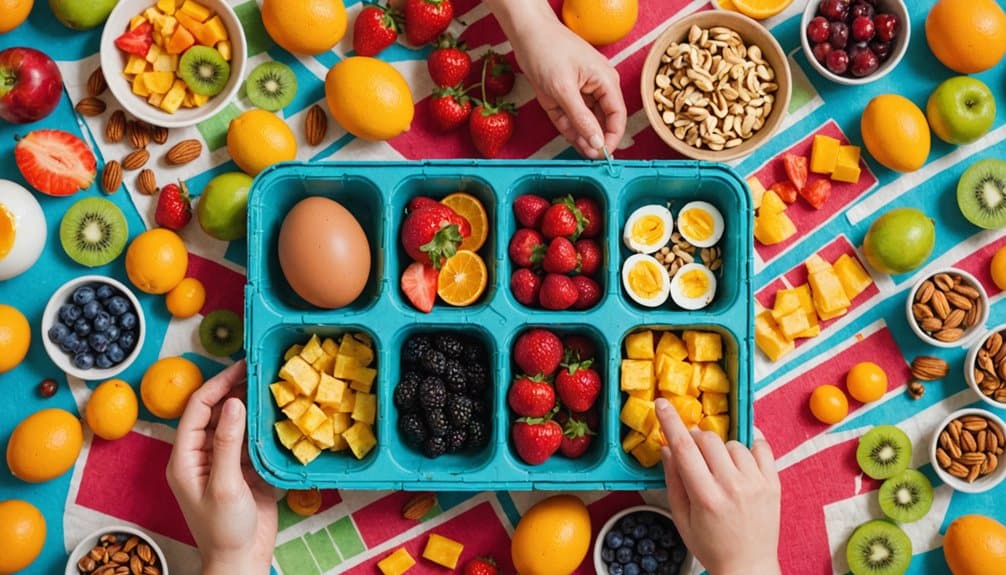Helping your child build strong fine motor skills doesn’t require expensive toys or tools—just a little creativity with items you already have at home! Here are the top fine motor activities that are fun, easy, and effective. Try creating a “munching monster” using a container with a cut-out mouth to “feed” small objects, or enjoy stringing straws to make colorful necklaces. These simple activities improve hand-eye coordination and finger strength while keeping kids entertained.
Everyday objects make beautiful tools for fine motor development. Use tape and chalk to create a sticky art masterpiece, or challenge your child to peel fruit like oranges or bananas. You can also build towers with spaghetti and cereal for a playful mix of problem-solving and acceptable motor practice. Don’t forget classic activities like puzzles and painting with Q-tips—they’re perfect for enhancing your child’s bilateral coordination and artistic expression.
Finally, make learning delicious with egg carton snack time, or get creative by shaping playdough into fun designs. These top fine motor activities engage your child while strengthening their hands and boosting their confidence. By including these activities in your daily routine, you’re setting the stage for success in writing, self-care, and more. Your involvement makes all the difference—have fun together!
Key Takeaways
- Engage children in fine motor activities such as creating a munching monster or making a puzzle using everyday items found at home.
- Incorporate coloring under the table activity or tape and chalk art to enhance grip strength and control in children.
- Peeling food with fingers serves as an effective motor activity that utilizes everyday household items.
- Everyday items like straws can be used for stringing or building towers, promoting creativity and the development of fine motor skills.
- Q-Tip painting techniques offer a fun, mess-free painting activity for children using easily accessible materials.
Color Under the Table Activity
Though it may appear unconventional, the “Color Beneath the Table Activity” is an interactive and imaginative way to enhance shoulder and core strength in children. This distinct delicate motor task, achievable using essential household items, not only supports physical development but also nurtures a child’s creativity.
By simply securing paper beneath a child-sized table, you create an original coloring experience. Tiny pieces of crayons or colored pencils can be utilized, encouraging the child’s pincer grasp and hand-eye coordination. The novelty of coloring under the table acts as a motivating element, prompting the child to participate longer in the activity.
This unique arrangement, however, provides more benefits than just enjoyment. As the child reaches upward to color, they inadvertently engage their shoulder and core muscles, thus enhancing strength. Additionally, this task assists in the development of fine motor skills, which are crucial in activities such as writing, cutting, and buttoning. In fact, early detection and intervention of any acceptable motor skill delays is essential for a child’s academic success and overall development.
Creating a Munching Monster
Following the creative approach of the Color Beneath the Table Activity, let’s introduce another inventive task—Crafting a Chomping Creature. This fun and interactive acceptable motor activity, aimed at children, uses a tennis ball and small objects found around the home.
- Crafting: The initial step involves cutting a slit in a tennis ball to resemble a creature’s mouth. Make sure the slit is wide enough for the chosen objects to pass through with a bit of resistance to boost hand strength.
- Feeding the Creature: Children will enjoy feeding the tennis ball creature with small objects. This action enhances their hand-eye coordination and promotes fine motor skill development.
- Imaginative Play: The Chomping Creature activity is not just about physical development. It also encourages creative play, allowing children to participate in pretend games while honing their motor skills.
- Finger Strength and Dexterity: Finally, this activity is an excellent exercise for developing finger strength and agility, vital skills for a range of everyday tasks.
Crafting a Chomping Creature is an engaging and beneficial activity. It uses everyday household items to nurture essential motor development in a fun and creative manner. Moreover, activities like these can significantly aid children in mastering self-care skills, which are pivotal for their overall growth and independence.
Peeling Food With Fingers

Peeling food with fingers incorporates daily tasks into fine motor skill development, offering a variety of benefits for children. This simple yet effective activity not only encourages independence in food preparation but also contributes significantly to the development of finger strength and agility. Peeling food with fingers is an ideal acceptable motor activity for snack time, promoting self-help skills while engaging in a fun and productive activity.
The process of peeling food supports fine motor skill development through tactile feedback. The sensation of food texture against their fingers enriches children’s sensory perception, making them more aware of their hand movements and the pressure they apply. Therefore, children can improve their finger control and coordination, which are fundamental components in performing precise tasks. Furthermore, this home-based activity aligns well with the principles of Pediatric Occupational Therapy, promoting the development of essential life skills and fostering independence in children from an early age.
Here is a table that further illustrates the benefits:
| Benefits | Details |
|---|---|
| Finger Strength | Improves the ability to perform tasks that require grip and precision |
| Tactile Feedback | Assists children in understanding different textures, promoting sensory integration |
| Fine Motor Skills | Cultivates coordination, control, and precision of small muscle movements
Tape and Chalk Art
Releasing creativity while honing fine motor skills, Tape and Chalk Art offers a myriad of benefits for children. This engaging activity involves using painter’s tape to create intricate designs on a variety of surfaces, fostering a sense of creativity and achievement.
- Promotes Fine Motor Skills: Applying and peeling off the tape encourages precision and hand-eye coordination and strengthens refined motor capabilities. This is a crucial skill for other daily tasks such as writing or buttoning clothes.
- Encourages Creativity: Children can express their creativity and uniqueness by being free to create any design with the painters’ tape.
- Enhances Visual Appeal: Children can fill the sections within the tape with chalk art, hence improving the visual appeal of their work and honing their coloring skills.
- Provides a Satisfying Reward: Peeling off the tape to reveal a distinct art piece offers a satisfying reward for the child’s effort and patience.
Furthermore, as part of a DIR/Floortime approach, this activity can also help nurture children’s social, emotional, and cognitive capacities through personalized developmental processes.
Making Your Puzzle

After exploring the artistic domain of Tape and Chalk Art, we now turn our attention to another stimulating activity that magnifies the benefits of fine motor skill development—making Your Puzzle. This delightful technique, using everyday items at home, not only promotes children’s creativity but also boosts their cognitive and motor skills.
Making your puzzle is a cost-effective and engaging way to stimulate problem-solving skills. By drawing and then cutting out puzzle pieces from a cereal box, children learn to navigate the complexities of spatial awareness. This activity, though simple, effectively encourages children to think critically about shapes, sizes, and the overall puzzle structure.
In addition to enhancing fine motor skills, this activity can also indirectly contribute to social skills development(#) by promoting cooperation and collaboration when children work together to solve their created puzzles.
The process of creating and solving the puzzle offers an appealing challenge that keeps kids engrossed while developing their fine motor skills. As they maneuver the puzzle pieces, their hand-eye coordination improves, and their fingers gain strength and agility. The puzzle-making activity, in this way, serves as a resourceful means to foster motor skill development in a fun, creative manner.
Stringing Straws for Fun
Switching our focus to another captivating and advantageous acceptable motor activity, we delve into “Stringing Straws for Enjoyment.” This activity not only entertains children but also carries significant developmental advantages.
- Fine Motor Reinforcement: Stringing straws requires children to handle small objects, promoting the fine motor reinforcement necessary for tasks such as writing, buttoning, and tying shoes.
- Pincer Grasp Progress: Cutting straws into pieces for stringing demands a pincer grasp (using thumb and forefinger). This grasp is vital for holding and manipulating objects with precision.
- Hand-eye Coordination Improvement: Threading string through straws improves hand-eye coordination, an essential skill for many everyday activities.
- Creativity and Sensory Experience: Beyond motor skills, stringing straws encourages creativity. Children can create jewelry, decorations, or other designs, providing a sensory and imaginative experience.
Indeed, “Stringing Straws for Enjoyment” is a versatile activity with numerous benefits. It can be adapted for different skill levels and interests, making it a practical and beneficial addition to your home’s collection of fine motor activities. This fun and effective tool aids in the development of vital life skills, serving your child’s growth and learning in a playful, captivating manner.
Building Spaghetti and Cereal Towers

Diving into our next engaging acceptable motor activity, we introduce “Constructing Spaghetti and Cereal Towers.” This exciting task taps into children’s creativity, utilizing everyday household items such as spaghetti and cereal to boost hand-eye coordination and fine motor precision.
This activity provides an excellent platform for children to investigate their sensory skills while promoting imaginative play. Placing playdough as the base, using spaghetti as the structure, and incorporating cereal as the building blocks for the towers require meticulous attention and precision.
Stacking and balancing spaghetti and cereal encourages children to improve their fine motor control. It is a fun way to challenge their skill and hand strength, which are critical elements in fine motor development. This task not only cultivates the child’s fine motor abilities but also teaches them the value of stability and balance.
As an added benefit, “Constructing Spaghetti and Cereal Towers” allows for the development of problem-solving skills. Encountering challenges such as unstable towers or misaligned cereal pieces can stimulate children’s minds, enriching their cognitive abilities. To sum up, this activity is a fun, challenging, and effective way to foster fine motor skills and hand-eye coordination.
Creating Playdough Designs
Exploring the realm of “Creating Playdough Designs” offers a dynamic platform for children to improve their fine motor skills. This activity, which uses easily accessible household items such as playdough and toothpicks, allows children to engage their hand muscles in a fun and creative manner.
- Promotes Hand-Eye Coordination: Shaping and molding playdough into different forms requires careful observation and manipulation, effectively enhancing hand-eye coordination.
- Improves Finger Dexterity: Rolling, pinching, and sculpting playdough designs engage diverse hand muscles and enhance finger dexterity.
- Encourages Creativity: Children can use their imagination to create diverse playdough designs, fostering creativity and artistic expression.
- Enhances Fine Motor Skills: Using tools like toothpicks to create intricate patterns further improves fine motor skills.
Creating playdough designs presents not only a fun-filled activity but also a hands-on approach to developing essential skills. It is an exciting way for children to learn, play, and grow. The potential for creativity is limitless, and the benefits for fine motor development are significant.
Egg Carton Snack Time

Moving from playdough designs, one can further strengthen the development of fine motor skills by incorporating everyday items such as egg cartons during snack time. This simple yet effective method encourages the development of a pincer grasp, an essential fine motor skill that involves using the thumb and forefinger to pick up small items.
By placing bite-sized snacks in the compartments of an egg carton, children are encouraged to use their pincer grasp to retrieve the snacks independently. This activity not only improves finger strength and skill but also fosters a sense of independence in the child.
Incorporating egg carton snack time into your child’s routine supports the development of fine motor skills practically and engagingly. It takes advantage of snack time being a regular part of a child’s day, turning it into an opportunity for learning and growth.
Egg carton snack time is an ideal activity for parents and caregivers looking to boost children’s fine motor abilities. It uses a common household item in a novel and educational way, making it an excellent addition to any home-based fine motor skills program.
Q-Tip Painting Techniques
Q-tip painting is an acceptable motor activity that offers numerous benefits for children, including the development of hand-eye coordination, precision, and grip strength. This section will provide a detailed overview of the materials needed for this activity and a step-by-step guide to implementing it effectively. Additionally, we will demonstrate how this activity can be adapted to cater to different age groups, encouraging creativity and artistic expression while simultaneously enhancing fine motor skills.
Benefits of Q-Tip Painting
While it may seem like a simple and fun activity, Q-tip painting actually offers a myriad of benefits for children, particularly concerning fine motor development. This popular activity not only promotes hand-eye coordination but also encourages children to develop their pincer grasp and finger control.
The benefits of Q-tip painting can be summarized in the following points:
- Acceptable motor skills improvement: Q-tip painting requires small, precise movements. This helps children enhance their fine motor skills, which are vital for a variety of everyday tasks.
- Hand-eye coordination: Painting with a Q-tip helps children improve their hand-eye coordination, a significant aspect of development that aids in tasks from writing to sports.
- Pincer grasp development: Holding a Q-tip to paint encourages the development of a child’s pincer grasp, the action of holding an object with the thumb and index finger. This is an essential skill for tasks such as writing and eating.
- Introduction to painting techniques: Q-tip painting introduces children to different painting techniques and textures. It can be easily adapted for various skill levels, making it a suitable activity for all children.
Required Materials for Activity
Having examined the multiple benefits of Q-tip painting for children’s fine motor development, we now turn our attention to the necessary materials to facilitate this engaging activity. The beauty of Q-tip painting, one of the many motor activities with household items, lies in its simplicity and accessibility.
The initial crucial item is paper, preferably thick enough to absorb the paint without tearing. Depending on what is available at home, construction paper, cardstock, or even small canvases can be used. The next item, of course, is Q-tips or cotton swabs. These small, easy-to-grip tools are ideal for young children learning to paint.
Apart from these, you will need paint. Non-toxic, washable paint in diverse colors allows children to discover their creativity freely. A palette or a few small dishes can be used for mixing colors and dipping the Q-tips. To wrap up, a protective layer for your work surface, such as a plastic tablecloth or newspaper, can help guarantee a mess-free experience.
These materials, most of which are likely already in your house, can create a rich, educational, and entertaining acceptable motor activity for children.
Step-by-Step Implementation Guide
Typically, the process of Q-tip painting begins with setting up your workspace. This step is vital to ensure a mess-free environment and to keep all necessary materials within reach.
The step-by-step guide to introducing Q-tip painting as an effective, acceptable motor activity using everyday items is as follows:
- Gather the required materials: Q-tips, paint (preferably washable), and a painting surface such as paper or cardboard.
- Prepare the workspace by spreading a protective sheet or newspaper to avoid paint stains. Keep a wet cloth or wipes handy for quick clean-ups.
- Teach the child how to dip the Q-tip into the paint and make dots or strokes on the painting surface. Please encourage them to experiment with different colors and patterns.
- Monitor the child’s progress and guide as needed. This activity improves fine motor skills and fosters creativity and precision control.
Frequently Asked Questions
What Are Fine Motor Activities Everyday?
Fine motor activities utilizing everyday items involve tasks that develop hand-eye coordination and finger dexterity. These include threading buttons, stacking coins, or twisting ties, which improve grip strength and control necessary for writing, drawing, and other precise tasks.
What are the top fine motor activities I can do at home to help my child?
The top fine motor activities are simple and fun. For creative play, everyday items like playdough, puzzles, or spaghetti are used. These activities strengthen your child’s hands and improve coordination, setting them up for success in tasks like writing and self-care.
How to Practice Fine Motor Skills at Home?
To practice fine motor skills at home, engage in activities like cutting paper, stringing beads, using clothespins, peeling fruits, or opening containers. These tasks effectively improve hand strength, agility, and hand-eye coordination.
What Are 5 Examples of Fine Motor Skills?
Fine motor skills include actions such as writing with a pencil, cutting with scissors, buttoning a shirt, using utensils during meals, and manipulating small objects in a coordinated manner with hands and fingers.
What Are Fine Motor Hobbies?
Fine motor hobbies are activities that help refine small muscle movements, primarily in hands and fingers. They include crafting, sewing, playing musical instruments, drawing, painting, and model building, improving dexterity and hand-eye coordination.
Conclusion
To sum up, these top fine motor activities use everyday items to help your child build essential skills while having fun. From shaping playdough to peeling fruit, each activity makes learning feel like playtime, boosting finger strength, hand-eye coordination, and creativity. You’re turning simple moments into meaningful opportunities for growth!
I’m so happy you’re taking an active role in your child’s development. If you have questions or need more ideas, I’m here to help. Encouraging your child with these activities not only strengthens their fine motor skills but also builds their confidence for future challenges. Together, we can make a big difference—one playful moment at a time!


Recent Comments